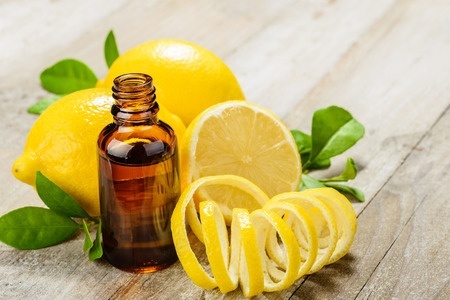
Lemon oils along with other citrus oils are readily prone to oxidation and because of their insolubility in aqueous systems also need to be made available in a colloidal dispersion if they are to be used functionally in beverages and other foodstuffs. In particular, one component of lemon oil called citral which lends a lemongrass and fresh green note to flavours is of considerable interest (Choi et al., 2010).
A recent article builds on our understanding of incorporating unstable flavour oils into colloidal dispersions by investigating the componentry required , especially the nature of the oil, the use of surfactants and the ratio of surfactant to oil (SOR) (Ziani et al., 2012). Colloidal dispersions were formed by homogenisation using lemon oils and a non-ionic surfactant (Tween 80), and buffered to pH 2.6 which is typical of many citrus beverages. Increasing degrees of transparency of the colloidal dispersion were achieved by forming ever higher surfactant to oil (SOR) ratios. Turbid suspensions contained a mixture of both dispersed micelles and oil droplets. Mean particle diameters were measured using dynamic light scattering. Perhaps not surprisingly, the solubilisation of the lemon oil increased with temperature from 4°C to 32 °C and was faster with a more concentrated form of oil. The research follows another recent study from the same group looking at mixed non-ionic surfactants using sucrose monopalmitate and/or Tween 80 (Rao & McClements, 2011, 2012). The two studies should improve understanding of how such colloids may be manufactured, their use in beverage systems and how they remain stable over time.
It’s worth looking at a number of articles to obtain a complete understanding of micro- and nanoemulsions in delivering not only flavour but nutraceuticals which would otherwise be difficult to solubilise in beverages (Chen et al., 2006; McClements, 2010). These two forms of emulsion are particularly attractive for application because they have a number of advantages over other systems. They offer much higher optical clarity, better physical stability and improved bioavailability. Emulsions generally are thermodynamically unstable but this is overcome by forming a microemulsion. Microemulsions have such a small particle size, with a radius less than 50 nm they hardly scatter light and so generate at best, a slight turbidity in solution.
References
Chen, L., Remondetto, G., Subirade, M. (2006) Food protein-based materials as nutraceutical delivery systems. Trends in Food Sci. Technol. 17(5) pp. 272-283
Choi, S., Decker, E., Henson, L., Popplewell, L. McClements, D. (2010) Inhibition of citral degradation in model beverage emulsions using micelles and reverse micelles. Food Chem., 122(1) pp. 111-116
McClements, D. Decker, E.A., Park, Y., Weiss, J.(2009) Structural design principles for delivery of bioactive components in nutraceuticals and functional foods. Crit. Rev. Food Sci. Nutr. 49(6) pp. 577-606
_____________(2010) Emulsion design to improve the delivery of functional lipophilic components. Ann. Rev. Food Sci. Technol. 1 pp. 241-269
Rao, J.; McClements, J. (2011) Food-grade microemulsions, nanoemulsions and emulsions: Fabrication from sucrose monopalmitate & lemon oil. Food Hydrocolloids 25(6) pp. 1413-1423
___________________(2012) Lemon oil solubilisation in mixed surfactant solutions: rationalising microemulsions & nanoemulsion formation. Food Hydrocolloids 26(1) pp. 268-276
Ziani, K., Fang, Y., McClements, D.J. (2012) fabrication and stability of colloidal delivery systems for flavour oils: Effect of composition and storage conditions. Food Res. Int. (Article)

Leave a Reply